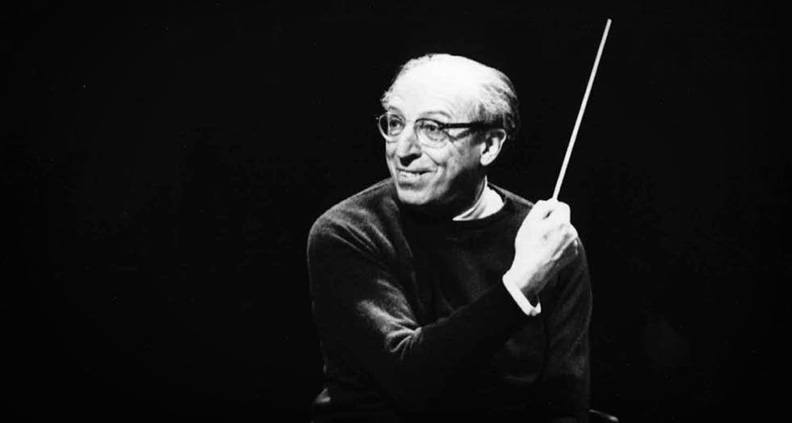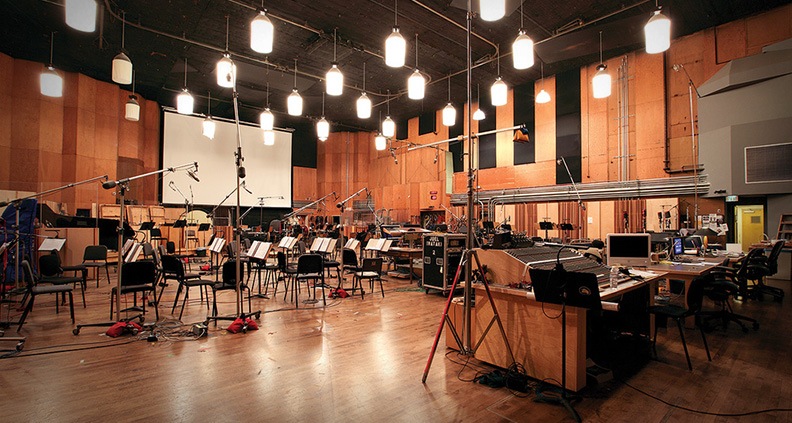Know The Score: How We Get The Tone of the Film Score Right
Each month in Know the Score writer and composer Aaron Gilmartin will step out of the scoring stage and explore, in detail, some important aspect of movie music. After all, film is as much about what you hear as what you can see.
***
The emotion a director wants their audience to feel is what determines the tone of a film score. Examples of a heroic film score tone would be the theme from Indiana Jones or the one from Star Wars—both composed by John Williams. A tone of uneasy darkness is suggested by the main theme from Inception, by Hans Zimmer, and nostalgia by the Nino Rota’s score for The Godfather. A director may want music to accentuate their film’s drama by having a similar vibe as the action we’re seeing on screen. Or they may want the music to play against the drama in certain scenes, using a contrary tone.
Tone is constructed from the instrumentation, orchestration, rhythm and tempo (speed) of the music, as well as its melody, harmonic backdrop and other elements. Even the context of the cue—what’s played before or after it—can affect the vibe of a musical moment. So ask yourself: do you want your score to have one overall tone that matches the tone of the film itself? Or a hybridization of genres that evolves alongside the film’s narrative arc? Or do you want something that works in counterpoint to the film?
Controlling tone can be trickier than it looks. So here are some tips for making sure your movie’s music is making your audience feel what you want them to feel.
FIVE WAYS TO THINK OF TONE

The tone of each musical moment can be thought of from a variety of vantage points. What does the music make the audience feel in the context of the film? What style of music is best for the action? What group of instruments will best support this moment? Does the cue connect the moment to other scenes, or is it introducing something new?
Working from the filmmaker’s original emotional palette and determining the elements that the music accentuates, we create a score with the necessary tone. We slowly focus on the elements that make up the story and drama onscreen and give them the support or space they need—music serving story, always.
Aaron Copland created a short list of ways that music interacts with film. These can be helpful in focusing in on what we’re trying to achieve with the tone of each musical moment. Here are the things that according Copland, film music has the ability to do:
Conjure a Specific Space or Moment in Time
Often this is done with music associated with genres like Westerns, or with music associated with a specific place, like a string section playing a waltz in Vienna.
Tell Us About the Internal Experience of a Character
Or, alternately: tell us about the unseen consequences of an onscreen action. All the characters may share in the action, but the score (and its tone) matches with the emotions of just one character to give us insight into their reaction to what is happening.
Act as Filler for an Empty Moment in Onscreen Action
Here, the tone of the score should closely match the tone of what we’re seeing onscreen. It should be understated to the point that it may not register consciously to the audience, but will prevent them from being taken out of the scene by an awkward silence.
Create Continuity Connecting Disparate Elements or Scenes
The music will play over different scenes—as if in a montage—and the tone will tell us that these seemingly disparate scenes or plot elements are connected.
Build Drama Within a Scene and Punctuate a Scene Change
The tone will build with the action of a scene and point to finality and resolution at the end of a scene.
THE PROCESS

Starting with the goal of eliciting a specific emotion, the composer decides what each musical moment will be in support of inside the scene, and what its function will be. You can use some of the ideas here as a structure for making those decisions. We’ll start with the most basic question:
How Much Music Do You Need?
The most basic shaper of tone is deciding how much music there should be. The director and composer agree on how much, and at what points music will enter the scene. And if a scene works without a score, I suggest not adding one. There are lots of great dramatic moments in film with no musical score, like this one from The Godfather, Part II.
Learn How to Describe the Basic Tone of What You Want
A director might use everyday words—eg, “sad,” “uneasy,” “euphoric”—to describe what emotion the score will support in each scene. The composer may then say what music is needed to accentuate that emotion. The tone usually evolves with the arc of the plot. It may start out breezy with a young hero and gain gravitas and seriousness as she grows up, confronts challenges and undergoes change. The opening of An Education shows its young female protagonist’s playfulness and promise. Later, the score reflects her maturity, sadness and disappointment.
Accentuating Drama
If music is meant to support the action directly, the tone of the score will be in sync with what we’re seeing onscreen. Working with the director, the composer decides which character or scene element needs support in order to be “emotionally legible.” It might be the interpersonal drama between different characters or the internal emotions of just one character. It could be the fear that a person feels when confronted with something terrifying, or the whiplash emotions of love and doubt in a new romance.
Playing Against Drama
On the other hand… Sometimes I compose music that does not accentuate the drama onscreen. This can create a sense of foreboding or connect what we’re seeing to another plot element or moment that may seem unrelated to the current scene. It can slow down a frenetic or disjointed scene or it can speed a scene up if it’s lagging. It can create comedy, even a very light moment of relief for the audience. In this example from Team America the music helps exaggerate the film’s ironic, satirical tone when the scene’s racial stereotyping and violence might otherwise be the focus.
Play Up Dramatic Moments
The tone of a score can even change with each cue, as when it enters for brief moments to accentuate or punctuate a change in the action. It can fill up a space that might otherwise be jarringly silent or empty feeling. This kind of score needs to be understated and unobtrusive in tone. It will have an impact, but it may not be overtly noticed.
Ultimately, the important thing is to decide how your score will interact with each scene in order to support the story you’re trying to tell. Like so much of filmmaking, it requires an insane amount of critical thought and judicious decision-making, but with the help of a talented composer, a good score with the right tone can help elevate your project in ways you never would have imagined. Good luck!
Learn how to become a Member of Film Independent by visiting our website, and click here to subscribe to our YouTube channel. Also, why not be our friend on Facebook, Twitter and Instagram?
